Little’s back. Tell a friend.
Prior to this series, the last time Josh Little bowled with the new ball in ODIs, he bowled six overs across two games against England. He took no wickets in the powerplay, conceding an economy rate of 12.67.
Little’s performance was part of a general malaise where no seamer aside from Craig Young was capable of keeping the ball in the park, let alone offer any consistent wicket-taking threat.
It led some to question Little’s workload. That England series was the culmination of a year in which his franchise commitments exploded. Had he simply run out of gas?
The two month break since then looks to have done him some good. On Friday in Harare, Little recorded Ireland’s best ever ODI figures of 6-36 in a comfortable victory. There are worse ways of bouncing back into form.
Virtually all of the damage done by Little came with the new ball in the powerplay, the area where he struggled so badly against England. In his second over, the fourth of the game, Little snared just the three wickets. A fourth came in his next over, the vital dismissal of Zimbabwe captain Sikandar Raza.
In the first six overs of the game, three of which were bowled by Little, Zimbabwe had lost four wickets. The contest was over after less than half an hour.
One cricket journalist texted saying “If we had this version of Little [before] we would have been at the World Cup.”
They’re not wrong. For all of Little’s brilliance, stemming back to dismissing Eoin Morgan on ODI debut, blowing through Sri Lanka’s top order at the 2021 T20 World Cup, his hat-trick against New Zealand a year later, he hadn’t yet single-handedly won a game for Ireland with such a dominant display.
Until now.
What’s changed? All cricketers are to some extent rhythm players, but few as much as Little. He has publicly stated he’s not a big fan of analysis, he plays on feel. Of all people, he needs to be in a groove, that intangible headspace where everything clicks, the elusive holy grail that probably only comes around once a season.
He was in that space on Friday morning. Though it didn’t quite start off like that, his first over culminating in back-to-back boundaries when Zimbabwe opener Tinashe Kamunhukamwe drove a wider delivery to the cover boundary and then pulled for the same result.
In England, Little was forcing things. He searched for in-swing that was not there, firing the ball wide outside the right-hander’s off stump, gifting free boundaries through the covers when the ball did not co-operate, instead holding its width.
When that failed, he went to his favoured, heavy lengths. England opener Phil Salt is good mates with Little having played franchise cricket with him in Sri Lanka, Manchester and South Africa. Will Jacks, the other opener, also faced Little plenty in net sessions for the Pretoria Capitals. They were ready for the short balls.
Little lacking the customary zip off the pitch when digging the ball in didn’t help - that rhythm was nowhere to be seen.
In general, Little and Adair bowled either too full or too short with the new ball during that series. The results were devastating.
Both of those deficiencies changed utterly against Zimbabwe. First of all the swing returned. Again, Little has spoken publicly about not being overly conscious of whether the ball will swing or not. He only started opening the bowling in 2021 when an injury to Craig Young opened the door. In an interview prior to the T20 World Cup that year, Little recalled an “Oh shit” moment where the ball swung accidentally, adding a new threat to his arsenal.
There was swing and then some on Friday. It wasn’t just a case of the famous early morning Harare conditions making life difficult for batters. Zimbabwe seamers Richard Ngarava and Blessing Muzarabani also caused plenty of problems in the afternoon with movement in the air.
Little’s first wicket actually came from pace, rather than swing. After digging one into the pitch, Kamunhukamwe decided to try and recreate his successful pull shot. It was too full, and Little in this rhythm is too quick for most players to pull on the front foot when the ball is at the top of the stumps. He spooned the ball to mid-wicket where Andrew Balbirnie took a good catch diving forward.
Two balls later, we saw Little’s devastating swing when on the right length. Milton Shumba prodded at a good length delivery that arced away from him late (he’s left-handed). The ball caught the edge, Tucker did the rest.
Fast forward two more balls and the right-handed Joylord Gumbie followed suit, again not moving his feet due to the length. The ball swung back at him late, flying between bat and pad and clattering into middle and off. A triple wicket maiden.
Ireland had what they wanted. Raza was in early facing the swinging ball, not batting during the middle overs where he could do damage. In last year’s World Cup defeat to Zimbabwe, Ireland wanted to bowl Little’s high pace against Raza as the match-up. It didn’t work out then, but it did on Friday with Raza in as early as the third over. Little’s late movement back in on the right length caused problems, Raza chopping on as his leg stump cartwheeled out of the ground.
Cue delirious scenes of celebration. Having the opposition at 19-4 wasn’t quite Ireland’s best ever start in ODIs. Per Ian Callender’s records, Pakistan were 17-4 in Clontarf in 2013. They went on to make 230 and win by two wickets.
In 2018, Afghanistan were 16-4 at Stormont. Ireland went on to win that one.
Friday also wasn’t the first time an Irish bowler had taken three wickets in an over. In T20Is, Little and Curtis Campher have both had hat-tricks (four-in-four in Campher’s case) in the last two years. In ODIs, Paul Stirling took three in an over against Afghanistan in his spell of 6-55 in 2017.
Despite the marginal precedent, Little stands all on his own atop the Irish figures board. There were signs in last Thursday’s T20 defeat that he was back to something approaching his best. Rushing Sean Williams for pace, he forced a chop on and bellowed in a show of emotion we haven’t seen in some time. There was a glare as a send-off as well.
Friday was different. There was no roar to the sky, no snarl. Just the customary celebration, both arms outstretched, running to whoever met him first for the congratulatory high fives.
Last week, Little acted like he was in a contest as both sides traded blows. On Friday, there was no Zimbabwean counter-punch, each scalp breaking through their resistance and further etching Little’s name into Irish history.


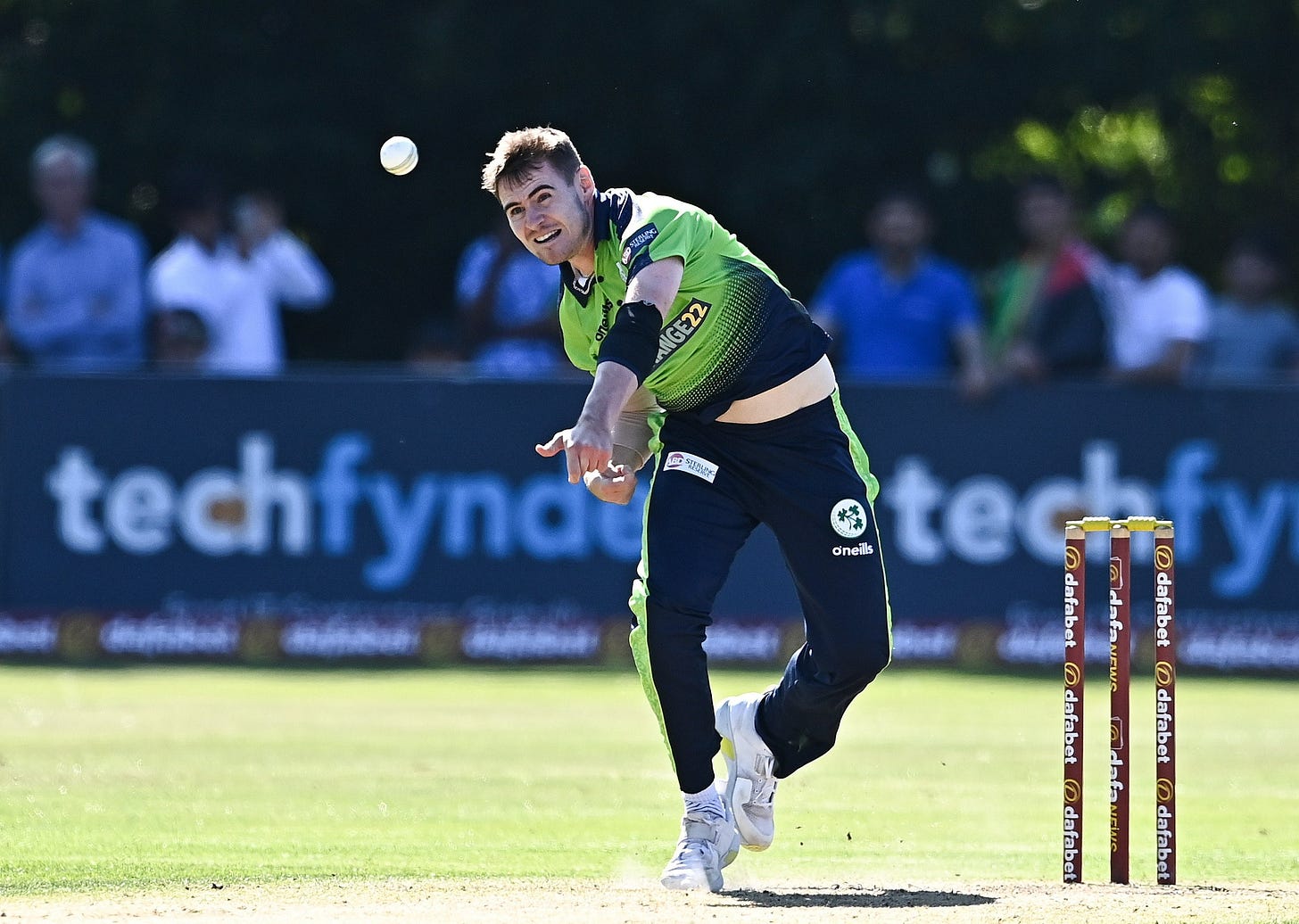
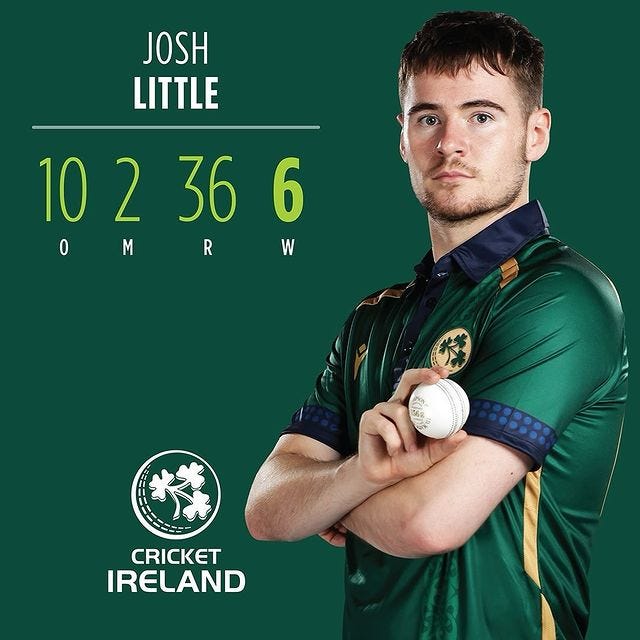
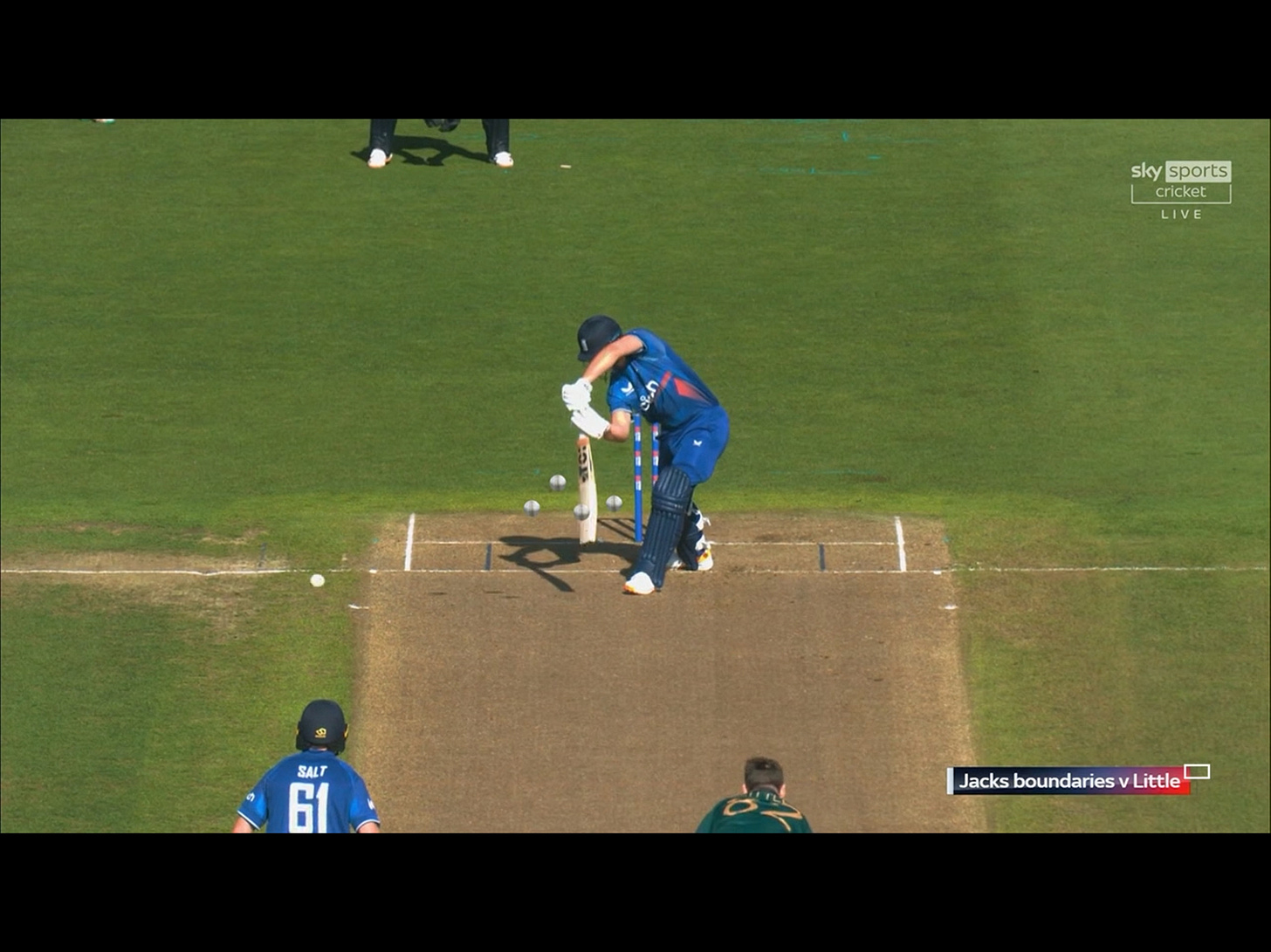
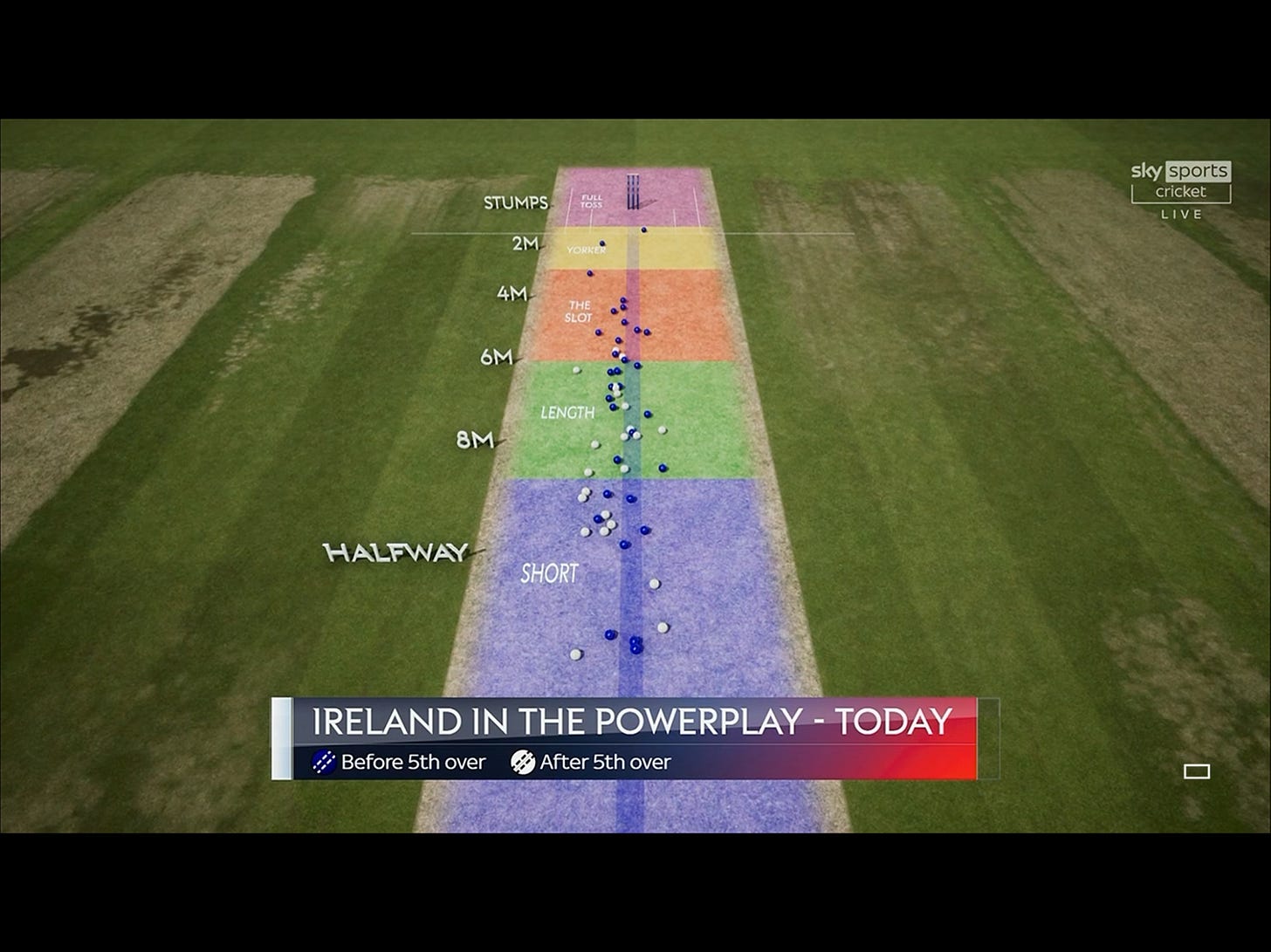
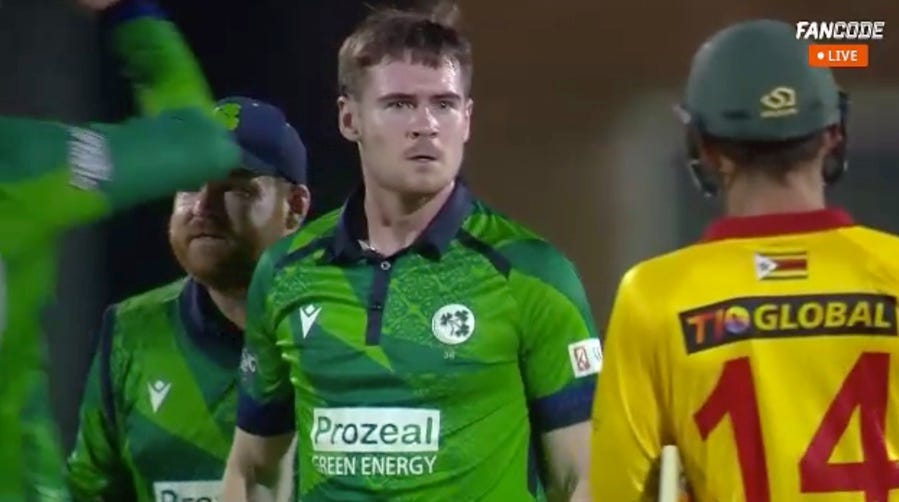
I agree with your analysis, but how do we keep Josh Little in mood, rhythm and form?